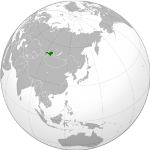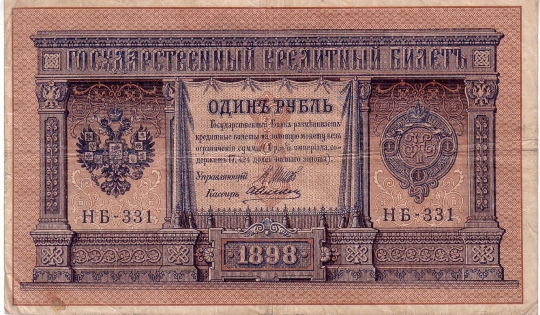Tannu Tuva

 The Tuvan People's Republic (or People's Republic of Tannu Tuva 1921 – 1944) was a partially recognized independent state in the territory of the former Tuvan protectorate of Imperial Russia also known as Uryankhaisky Krai. It was a satellite state of the Soviet Union that is now known as the Tuva Republic within the Russian Federation. The Soviet Union and the Mongolian People's Republic were the only countries to recognize its independence. Following the Russian Revolution of 1917, Communist troops took Tuva in January 1920. The chaos accompanying this era allowed the Tuvans to again proclaim their independence. On 14 August 1921, the Bolsheviks (supported by Russia) established a Tuvan People's Republic, called Tannu Tuva until 1926. Tannu refers to the Tannu-ola Mountains while Tuva is derived from the ethnicity Tuvan. The capital Khem-Beldir was eventually renamed Kyzyl ('red' in Tuvan). A treaty between the Soviet Union and the Mongolian People's Republic in 1926 affirmed the country’s independence. No other countries formally recognized it, although it appeared on maps and globes produced in the United States. Tuva’s first Prime Minister was Donduk Kuular of the Tuvan People's Revolutionary Party. Kuular made Buddhism the state religion and tried to limit settlers and propaganda coming from Russia. He also tried to establish ties with Mongolia. The Soviet Union became increasingly alarmed by these initiatives and in 1929 Prime Minister Kuular was arrested and later executed. In the USSR meanwhile (in 1930) five members of the Communist University of the Toilers of the East (KUTV), the same group that executed Kuular, were appointed "commissars extraordinary" for Tuva. Staunchly loyal to Joseph Stalin's government, they purged the Tuvan People's Revolutionary Party of about a third of its members and pushed collectivisation in the traditionally nomadic cattle-breeding country. The new government set about trying to destroy Buddhism and shamanism in Tuva, a policy encouraged by Stalin. Evidence of the success of these actions can be seen in the decline in the numbers of lamas in the country: in 1929 there were 25 lamaseries and about 4,000 lamas and Shamans; in 1931 there was just one lamasery, 15 lamas, and approximately 725 shamans. The attempts at eradicating nomadic husbandry were more difficult. A census in 1931 showed that 82.2% of Tuvans still engaged in nomadic cattle breeding. Salchak Toka, one of the commissars extraordinary mentioned above, was made General Secretary of the Tuvan People's Revolutionary Party in 1932. He stayed in power in Tuva until his death in 1973. Tuva entered World War II with the USSR on 25 June 1941, three days after the German attack on the Soviet Union. On 11 October 1944, at the request of Tuva's Small People's Khural (parliament), Tuva became a part of the Soviet Union as the Tuvan Autonomous Oblast of the Russian SFSR by the decision of Presidium of the Supreme Soviet of the USSR. The Small People's Khural formalized the annexation at its final session on 1 November 1944. Salchak Toka was given the title of First Secretary of the Tuvan Communist Party. Tuva remained an autonomous republic (Tuvan ASSR within the Russian SFSR) from 10 October 1961 until 1992. The area that was the Tuvan People's Republic is now known as Tyva Republic within the Russian Federation. Over 75% of population of Tuva are ethnic Tuvans.
The Tuvan People's Republic (or People's Republic of Tannu Tuva 1921 – 1944) was a partially recognized independent state in the territory of the former Tuvan protectorate of Imperial Russia also known as Uryankhaisky Krai. It was a satellite state of the Soviet Union that is now known as the Tuva Republic within the Russian Federation. The Soviet Union and the Mongolian People's Republic were the only countries to recognize its independence. Following the Russian Revolution of 1917, Communist troops took Tuva in January 1920. The chaos accompanying this era allowed the Tuvans to again proclaim their independence. On 14 August 1921, the Bolsheviks (supported by Russia) established a Tuvan People's Republic, called Tannu Tuva until 1926. Tannu refers to the Tannu-ola Mountains while Tuva is derived from the ethnicity Tuvan. The capital Khem-Beldir was eventually renamed Kyzyl ('red' in Tuvan). A treaty between the Soviet Union and the Mongolian People's Republic in 1926 affirmed the country’s independence. No other countries formally recognized it, although it appeared on maps and globes produced in the United States. Tuva’s first Prime Minister was Donduk Kuular of the Tuvan People's Revolutionary Party. Kuular made Buddhism the state religion and tried to limit settlers and propaganda coming from Russia. He also tried to establish ties with Mongolia. The Soviet Union became increasingly alarmed by these initiatives and in 1929 Prime Minister Kuular was arrested and later executed. In the USSR meanwhile (in 1930) five members of the Communist University of the Toilers of the East (KUTV), the same group that executed Kuular, were appointed "commissars extraordinary" for Tuva. Staunchly loyal to Joseph Stalin's government, they purged the Tuvan People's Revolutionary Party of about a third of its members and pushed collectivisation in the traditionally nomadic cattle-breeding country. The new government set about trying to destroy Buddhism and shamanism in Tuva, a policy encouraged by Stalin. Evidence of the success of these actions can be seen in the decline in the numbers of lamas in the country: in 1929 there were 25 lamaseries and about 4,000 lamas and Shamans; in 1931 there was just one lamasery, 15 lamas, and approximately 725 shamans. The attempts at eradicating nomadic husbandry were more difficult. A census in 1931 showed that 82.2% of Tuvans still engaged in nomadic cattle breeding. Salchak Toka, one of the commissars extraordinary mentioned above, was made General Secretary of the Tuvan People's Revolutionary Party in 1932. He stayed in power in Tuva until his death in 1973. Tuva entered World War II with the USSR on 25 June 1941, three days after the German attack on the Soviet Union. On 11 October 1944, at the request of Tuva's Small People's Khural (parliament), Tuva became a part of the Soviet Union as the Tuvan Autonomous Oblast of the Russian SFSR by the decision of Presidium of the Supreme Soviet of the USSR. The Small People's Khural formalized the annexation at its final session on 1 November 1944. Salchak Toka was given the title of First Secretary of the Tuvan Communist Party. Tuva remained an autonomous republic (Tuvan ASSR within the Russian SFSR) from 10 October 1961 until 1992. The area that was the Tuvan People's Republic is now known as Tyva Republic within the Russian Federation. Over 75% of population of Tuva are ethnic Tuvans.
P1 - 1 Lan on 1 Ruble











